Monetizing content is fast becoming a publisher’s lifeblood in this modern-day digital landscape.
Given that audience attention is up for competition, leveraging tools like Google Ads helps yield revenue while improving the customer experience.
For publishers, mastering the subtleties of using Google Ads and its implementation is key to unlocking its full potential.
This article delves into the essentials of using Google Ads as a publisher, guiding you through setup, optimization, and advanced strategies to maximize your earning potential.
- Understanding Google Ads: A Publisher’s Guide
- Setting Up Google Ads for Your Publishing Platform
- Optimizing Ad Performance for Maximum Revenue
- Advanced Strategies for Enhancing Monetization
- Balancing Monetization with User Experience
- Maximizing Monetization While Ensuring User Satisfaction
- Google Ad Monetization Frequently Asked Questions
Understanding Google Ads: A Publisher’s Guide
As a publisher, you probably know the struggle to balance quality content with sustainable revenue streamsDifferent sources of income generated by a business or individual..
Google Ads offers a powerful platform to bridge this gap by enabling you to display relevant ads to your audience while earning income.
But what exactly is Google Ads, and how does it align with a publisher’s goals?
Google Ads is a comprehensive advertising platform that connects advertisers with publishers to reach specific audiences effectively.
For publishers, it means monetizingThe process of earning revenue from a product, service, or content. website traffic through targeted ads, enhancing user experience, and maintaining control over ad placements.

Illustrating the relevance of Google Ads for publishers.
Overview of Google Ads and Its Relevance to Publishers
Google Ads operates on the Pay-Per-ClickAn online advertising model where advertisers pay each time a user clicks on their ad. (PPC) model, where advertisers bid on ad spaces, especially through publishers.
This ensures publishers that their displayed ads will be relevant to audiences, driving better engagement and revenue generation.
With Google AdSenseA Google platform that allows publishers to earn revenue by displaying targeted ads on their websites., publishers can unlock a large network of advertisers and attract a consistent flow of niche-relevant ads to their websites.
- Relevance: Ads are customized based on user preferences and browsing behavior, ensuring they resonate with your audience.
- Scalability: Whether you run a small blog or a large media site, Google Ads caters to businesses of all sizes.
- Trust: Partnering with Google ensures compliance with industry standards and reliable payouts.
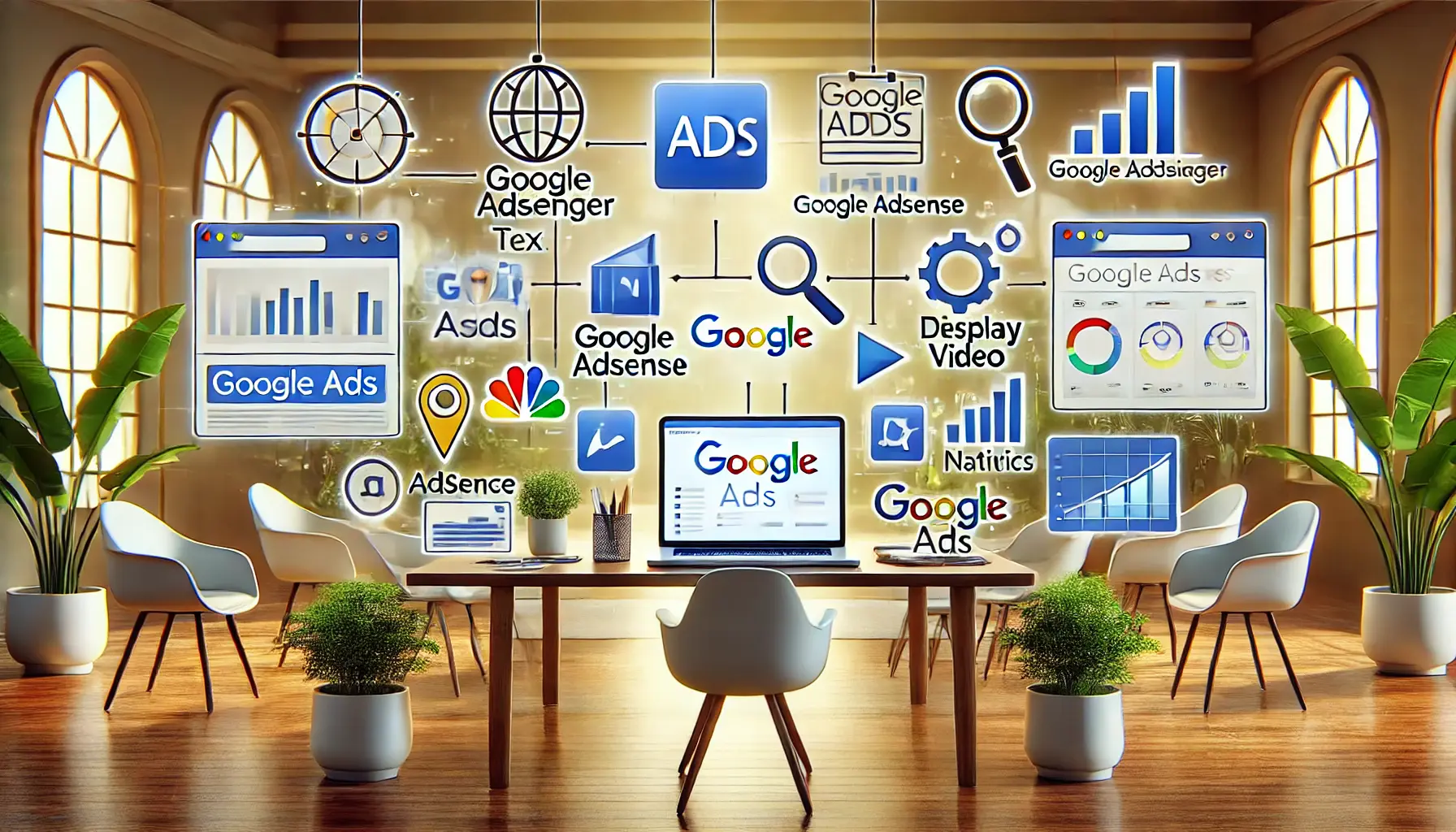
Exploring the key components of the Google Ads ecosystem for publishers.
Key Components of the Google Ads Ecosystem
To effectively utilize Google Ads, understanding its key components is vital:
- Google AdSense: This tool allows publishers to display ads on their websites and earn revenue from clicks or impressions.
- Google Ad Manager: A comprehensive ad management platform designed for larger publishers, offering more control and flexibility.
- Ad Formats: Google supports various ad formats, including text, display, video, and native ads, catering to diverse audience preferences.
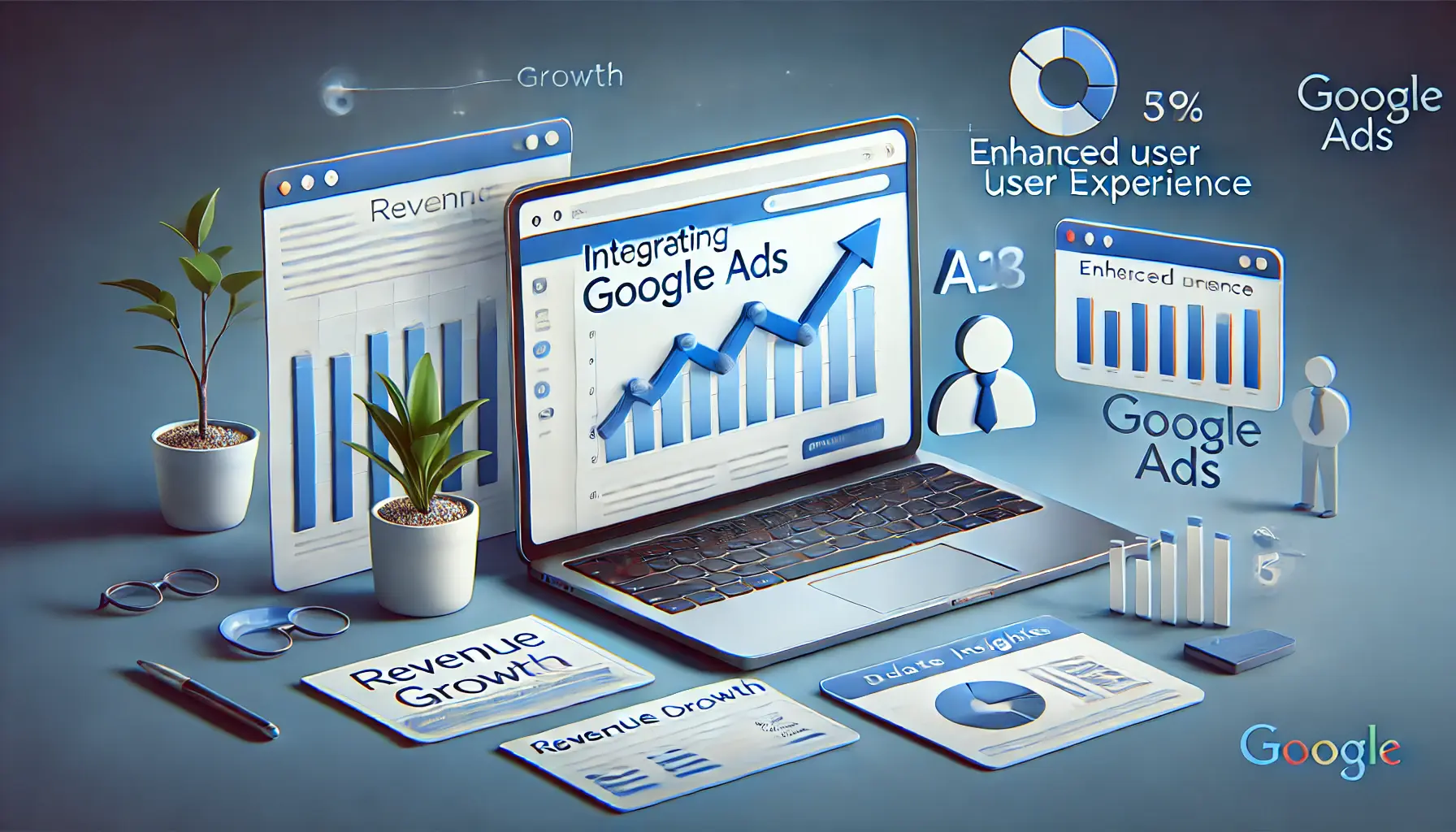
Highlighting the benefits of integrating Google Ads into publishing platforms.
Benefits of Integrating Google Ads into Publishing Platforms
Integrating Google Ads into your platform offers several benefits:
- Monetization: Generate a steady revenue stream by placing relevant ads in front of your audience.
- User Experience: Well-placed ads can complement your content by providing additional value to visitors.
- Data Insights: Google Ads provides analytics to help understand audience behavior and optimize ad performance.
By leveraging Google Ads, publishers can create a win-win situation where users enjoy tailored content while generating revenue through effective ad placements.
In the next section, we’ll dive into the practical steps of setting up Google Ads for your publishing platform.
Google Ads bridges the gap between quality content and sustainable revenue, providing publishers with tools to display targeted ads and monetize traffic effectively.

Visualizing the setup process for Google Ads on a publishing platform.
Setting Up Google Ads for Your Publishing Platform
Embarking on the journey to monetize your content with Google Ads involves several key steps.
As a publisher, it’s essential to integrate Google Ads seamlessly into your platform to maximize revenue and enhance user experience.
Here’s a comprehensive guide to get you started:
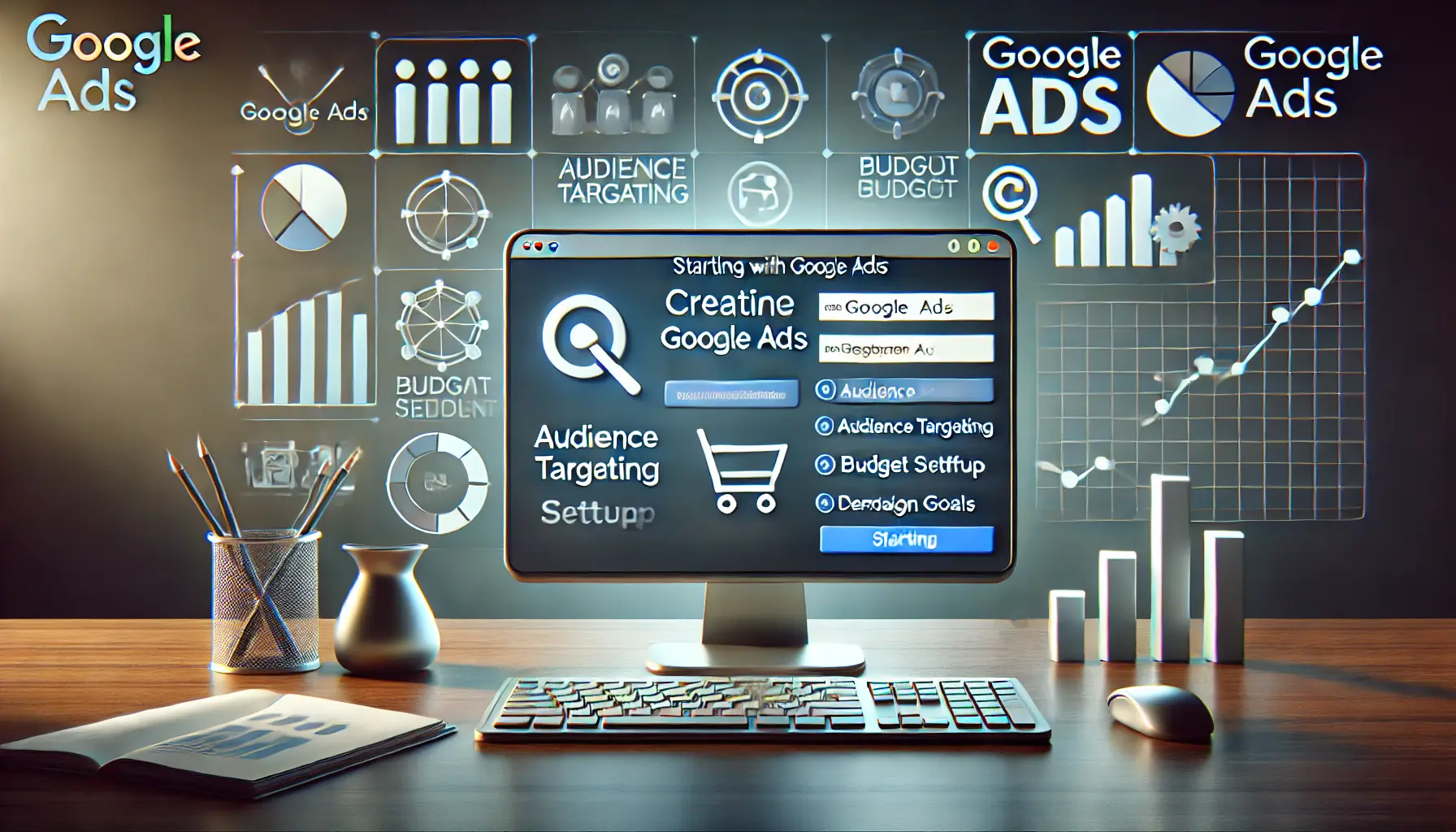
Illustrating the process of creating and configuring a Google Ads account.
Creating and Configuring a Google Ads Account
To begin, you’ll need to set up a Google Ads account:
- Sign Up: Go to the Google Ads homepage and click ‘Start Now’ to get started. Follow the prompts to provide information about your business and your goals for advertising with Google Ads.
- Define Your Audience: Identify the target audience’s demographics, interests, and behaviors to ensure the ads reach the right users.
- Set Your Budget: Determine your daily or monthly budget based on your financial goals and objectives as an advertiser.

Visualizing the integration of Google AdSense with a WordPress website.
Integrating Google AdSense with Your WordPress Website
For WordPressA popular open-source content management system used for building websites and blogs. users, integrating Google AdSense is a straightforward process:
- Install Site Kit by Google: This official plugin simplifies the integration of AdSense with your WordPress site. Navigate to your WordPress dashboard, go to ‘Plugins,’ click ‘Add New,’ search for ‘Site Kit by Google,’ install, and activate it.
- Connect AdSense: After activation, go to Site Kit’s dashboard and follow the prompts to connect your AdSense account. The plugin will automatically place the necessary code on your site, enabling ads to display across your pages.
Utilizing Site Kit not only facilitates AdSense integration but also provides insights from other Google tools like Analytics and Search Console, offering a holistic view of your site’s performance.

Illustrating compliance with Google Ads policies.
Ensuring Compliance with Google Ads Policies
Adhering to Google Ads policies is crucial to maintain the integrity of your site and avoid potential penalties:
- Review Content Guidelines: Ensure your website content complies with Google’s content policies, avoiding prohibited material such as adult content, violence, and misleading information.
- Implement Privacy Policies: Clearly communicate to users how their data is collected and used, in line with Google’s data protection standards.
- Monitor Ad Placement: Place ads in a manner that doesn’t disrupt user experience. Avoid excessive ads and ensure they don’t interfere with navigation or content readability.
Setting up your Google Ads account with scrutiny, connecting AdSense with your WordPress, and strictly following Google’s policy guidelines constitute the perfect base for effective content monetization.
In the next section, we’ll explore strategies for optimizing ad performance to maximize your return on investment.
Starting with Google Ads involves creating an account, defining your audience, and integrating AdSense using tools like Site Kit for WordPress.

Visualizing strategies for optimizing ad performance for maximum revenue.
Optimizing Ad Performance for Maximum Revenue
As a publisher, effectively monetizing your content through Google Ads requires strategic optimization to enhance ad performance and maximize revenue.
Implementing responsive ad units, leveraging data analytics, conducting A/B testingA method of comparing two versions of a webpage, ad, or other content to determine which performs better., and utilizing automation are key strategies to achieve these goals.

undefined
Implementing Responsive Ad Units for Better Engagement
Responsive ad units automatically resize and adapt their look and feel to different screen sizes and device orientations for optimal rendering on desktops, tablets, and smartphones.
This adaptability improves user experience and increases the likelihood of ad engagement, leading to higher click-through rates (CTR) and revenue.
- Improved User Experience: Ads integrate seamlessly into different screen sizes, providing a cohesive browsing experience.
- Increased Viewability: Properly sized ads are more likely to be seen and interacted with by users.
- Time Efficiency: Responsive ads reduce the need for creating multiple ad sizes, streamlining the ad management process.

Visualizing the use of data analytics for monitoring and optimizing ad performance.
Utilizing Data Analytics to Monitor Ad Performance
Analyzing ad performance data regularly will help in making informed decisions.
Google Ads offers a variety of analytics tools that provide insights into metrics such as impressions, CTR, and conversion rates.
Tracking these metrics helps publishers identify what is working and what needs improvement.
- Identify High-Performing Ads: Determine which ads resonate most with your audience to replicate their success.
- Optimize Underperforming Ads: Adjust or replace ads that aren’t meeting performance expectations.
- Audience Insights: Gain a deeper understanding of your audience’s preferences and behaviors.

Illustrating A/B testing of ad formats and placements for optimized performance.
A/B Testing Ad Formats and Placements
A/B testing, or split testing, involves comparing two versions of an ad or placement to determine which performs better.
This method allows publishers to make data-driven decisions to optimize ad formats and placements for maximum engagement and revenue.
- Test Variables: Try different ad sizes, color schemes, positions, and formats to see what works best.
- Measure Results: Analyze the performance of each metric to determine the most successful ad variations.
- Continuous Improvement: Implement the winning variation and continue to test new ideas to refine ad strategies further.
For example, testing different ad placements can reveal optimal positions that enhance visibility without disrupting user experience.
Similarly, experimenting with various ad formats, such as text versus display ads, can provide insights into audience preferences.
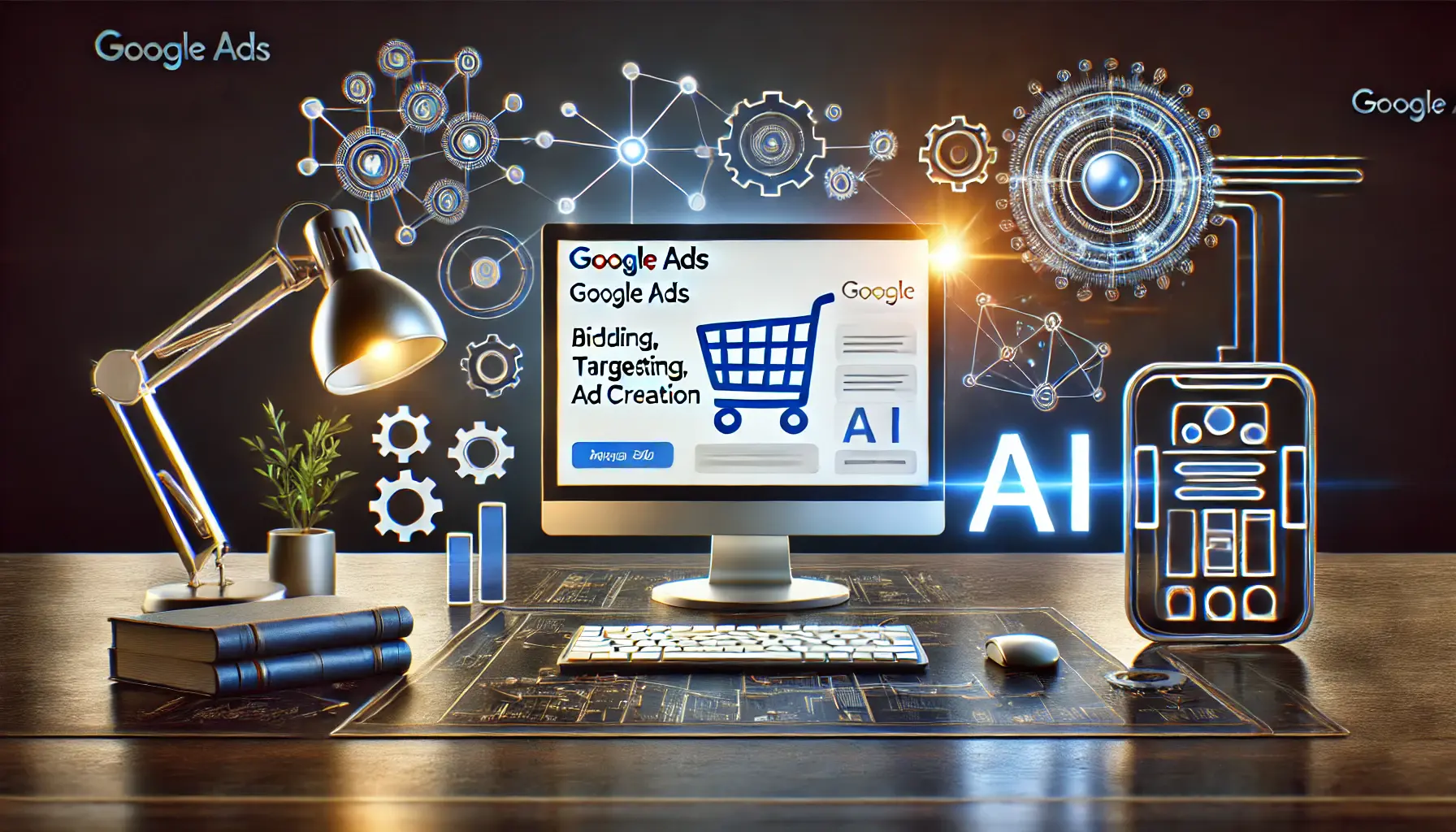
Illustrating the use of AI and automation in Google Ads for optimized ad management.
Leveraging AI and Automation in Google Ads
Google Ads offers AI-driven tools that automate bidding, targeting, and ad creation processes.
Utilizing these features can enhance efficiency and effectiveness in ad campaigns.
- Automated Bidding: AI adjusts bids in real-time to maximize conversions within your budget.
- Smart Campaigns: Simplified campaign management with automated targeting and ad delivery.
- Dynamic Creative Optimization: AI assembles ad components to create personalized ads for different audience segments.
By embracing AI and automation, publishers can streamline ad operations, respond swiftly to market changes, and deliver more relevant ads to their audience, ultimately boosting revenue.
Through implementing such optimization strategies, publishers achieve greater ad performance, better engagement by users, and higher revenue potential.
In the next section, advanced strategies for enhancing monetization efforts will be explored.
- Responsive ad units enhance user engagement across devices.
- Data analytics inform optimization efforts for better ad performance.
- A/B testing helps identify effective ad formats and placements.

Visualizing advanced strategies for enhancing monetization in digital advertising.
Advanced Strategies for Enhancing Monetization
As a publisher, exploring advanced strategies can significantly boost your monetization efforts.
Implementing header biddingA programmatic advertising technique allowing multiple ad exchanges to bid for ad inventory simultaneously., utilizing innovative content formats like Google Web StoriesA visually rich, tappable content format optimized for mobile devices, designed to deliver engaging narratives., and diversifying revenue streams are key approaches to consider.

Visualizing the process of implementing header bidding to increase ad revenue.
Implementing Header Bidding for Increased Ad Revenue
Header bidding is an advanced programmatic advertising technique that lets multiple demand sources bid simultaneously on your ad inventory.
This increases competition and could translate to higher ad revenues.
By integrating header bidding into your ad stack, you can:
- Increase Competition: Allow multiple buyers to bid in real time on your ad inventory, increasing its value.
- Improve Fill Rates: Increase the likelihood of filling your ad slots by engaging multiple demand partners.
- Gain Transparency: Access detailed insights into bidder performance and demand sources.
To implement header bidding effectively, consider using platforms like Prebid.js, an open-source solution that simplifies the process.
Additionally, Google Ad Manager offers improved support for header bidding through yield groups, streamlining setup and reporting.

Visualizing the use of Google Web Stories to engage and interact with an audience.
Leveraging Google Web Stories for Audience Engagement
Google Web Stories are a visually rich, tappable content format optimized for mobile devices, offering an immersive experience for your audience.
As a publisher, integrating Web Stories can:
- Extend Reach: Web Stories may appear in Google Search, Images, and Discover, increasing your visibility.
- Boost Engagement: The interactive nature attracts users, encouraging them to engage deeply with your content.
- Monetization Opportunities: Integrate ads within Web Stories to create new revenue streams.
Creating compelling Web Stories involves combining text, images, and videos to craft engaging narratives.
Tools like the Web Stories plugin for WordPress facilitate this process, enabling you to publish stories directly on your site.

Visualizing the concept of diversifying revenue streams beyond traditional ads.
Diversifying Revenue Streams Beyond Traditional Ads
Relying solely on traditional display ads can limit your monetization potential.
Exploring alternative revenue streams provides stability and growth opportunities.
Consider these methods:
- Affiliate Marketing: Promote products relevant to your audience and earn commissions on resulting sales.
- Sponsored Content: Collaborate with brands to create content targeted to your audience’s needs, adding value while generating profit.
- Subscription Models: Provide premium content or features behind a paywall to generate recurring revenue from loyal readers.
By diversifying your revenue streams, you can reduce dependence on a single income source and create a more resilient business model.
These advanced strategies can help improve your monetization, increase audience engagement, and ensure sustainable revenue growth.
In the next section, we will discuss best practices for balancing monetization with user experience.
Header bidding, Google Web Stories, and diversifying revenue streams beyond traditional ads are transformative strategies for publishers.

Visualizing the balance between monetization and user experience.
Balancing Monetization with User Experience
As a publisher, it’s crucial to balance monetization efforts with a positive user experience.
Implementing viewability best practices, addressing ad blockers, and ensuring optimal ad placement are key strategies to achieve this balance.

Visualizing the implementation of viewability best practices for digital ads.
Implementing Viewability Best Practices
Enhancing ad viewability is essential for effective monetization.
Consider the following practices:
- Responsive Design: Create responsive ads to accommodate different devices and ensure a seamless user experience across desktops, tablets, and smartphones.
- Ad Placement: Place ads inline with the main content or in content-rich areas for better engagement without disrupting the user experience.
- Page Load Speed: Optimize the loading time of your site to ensure that ads render quickly and maintain user satisfaction.
By focusing on these areas, you can enhance ad viewability and user satisfaction simultaneously.

Illustrating the impact of ad blockers on revenue and strategies for mitigation.
Addressing the Impact of Ad Blockers
Ad blockers can significantly affect your revenue.
To mitigate this impact:
- Acceptable Ads: Participate in programs that allow less intrusive ads to be displayed to users with ad blockers enabled, recovering potential lost revenue.
- User Communication: Engage with users to explain how ads support your content, encouraging them to whitelist your site.
- Ad Recovery Tools: Implement tools that detect ad blockers and offer alternative solutions to display ads or monetize content.
These strategies can help reduce revenue loss due to ad blockers while maintaining a positive relationship with your audience.

Visualizing the concept of ensuring optimal ad placement on a webpage.
Ensuring Optimal Ad Placement
Strategic ad placement enhances both monetization and user experience:
- In-Content Ads: Place ads within the main content flow to increase visibility and engagement.
- Above the Fold: Position ads in areas visible without scrolling to improve viewability rates.
- Avoid Overloading: Refrain from placing too many ads in a single area to prevent overwhelming users and causing ad fatigue.
Thoughtful ad placement ensures that monetization efforts do not compromise the quality of the user experience.
Using these strategies will ensure that publishers balance monetization with user experience, guaranteeing sustainable revenue growth with a satisfied audience.
- Implement viewability best practices, such as responsive design and optimized ad placement.
- Address ad blockers with acceptable ads programs and user communication.
- Ensure optimal ad placement for visibility and user satisfaction.

Illustrating the balance between maximizing monetization and ensuring user satisfaction.
Maximizing Monetization While Ensuring User Satisfaction
Monetizing content effectively is both an art and a science, requiring publishers to strike the perfect balance between revenue generation and maintaining a seamless user experience.
By leveraging tools like Google Ads and implementing strategic approaches, publishers can unlock new levels of success while keeping their audience engaged and satisfied.

Visualizing key takeaways for publishers in digital advertising.
Key Takeaways for Publishers
In this article, we have explored several strategies to help publishers optimize their monetization endeavors.
Here is a snapshot of the main points:
- Hosting Google Ads: Editors can benefit hugely by hosting Google Ads on their online platforms. Using Google tools like AdSense and Ad Manager, placing relevant advertisements becomes easier and more feasible.
- Setting Up Your Platform: Creating a Google Ads account, integrating Google AdSense, and ensuring policy compliance provide the foundation for a successful monetization strategy.
- Optimizing Ad Performance: Drive maximum revenue from ad placements by implementing responsive ad units, leveraging data analytics, and conducting A/B testing.
- Exploring Advanced Strategies: Leveraging header bidding, adopting innovative formats like Google Web Stories, and diversifying revenue streams can unlock new monetization opportunities.
- Balancing Monetization with User Experience: Thoughtful ad placement, addressing ad blockers, and adhering to viewability best practices help create a win-win scenario for publishers and users alike.

Visualizing the essential balance between user experience and monetization in digital advertising.
Why Balance Is Essential
While revenue generation is a key goal, user experience cannot be overlooked.
Publishers who prioritize their audience’s satisfaction by offering valuable content and non-intrusive ads are more likely to retain loyal users.
Striking this balance ensures long-term growth and a sustainable business model.

Visualizing the final thoughts and strategies for publishers in digital advertising.
Final Thoughts for Publishers
By integrating these strategies into their workflows, publishers can optimize their monetization strategies without compromising audience trust and satisfaction.
Google Ads and Ad Manager are versatile platforms that, when used correctly, can revolutionize the way publishers approach content monetization.
Whether you’re just getting started with Google Ads or refining an established strategy, continuous improvement and a user-first mindset will position you for success in this ever-evolving digital landscape.
Remember, the key lies in balancing monetization with exceptional user experience.
While monetization is essential, prioritizing user experience fosters long-term loyalty and sustainable growth.
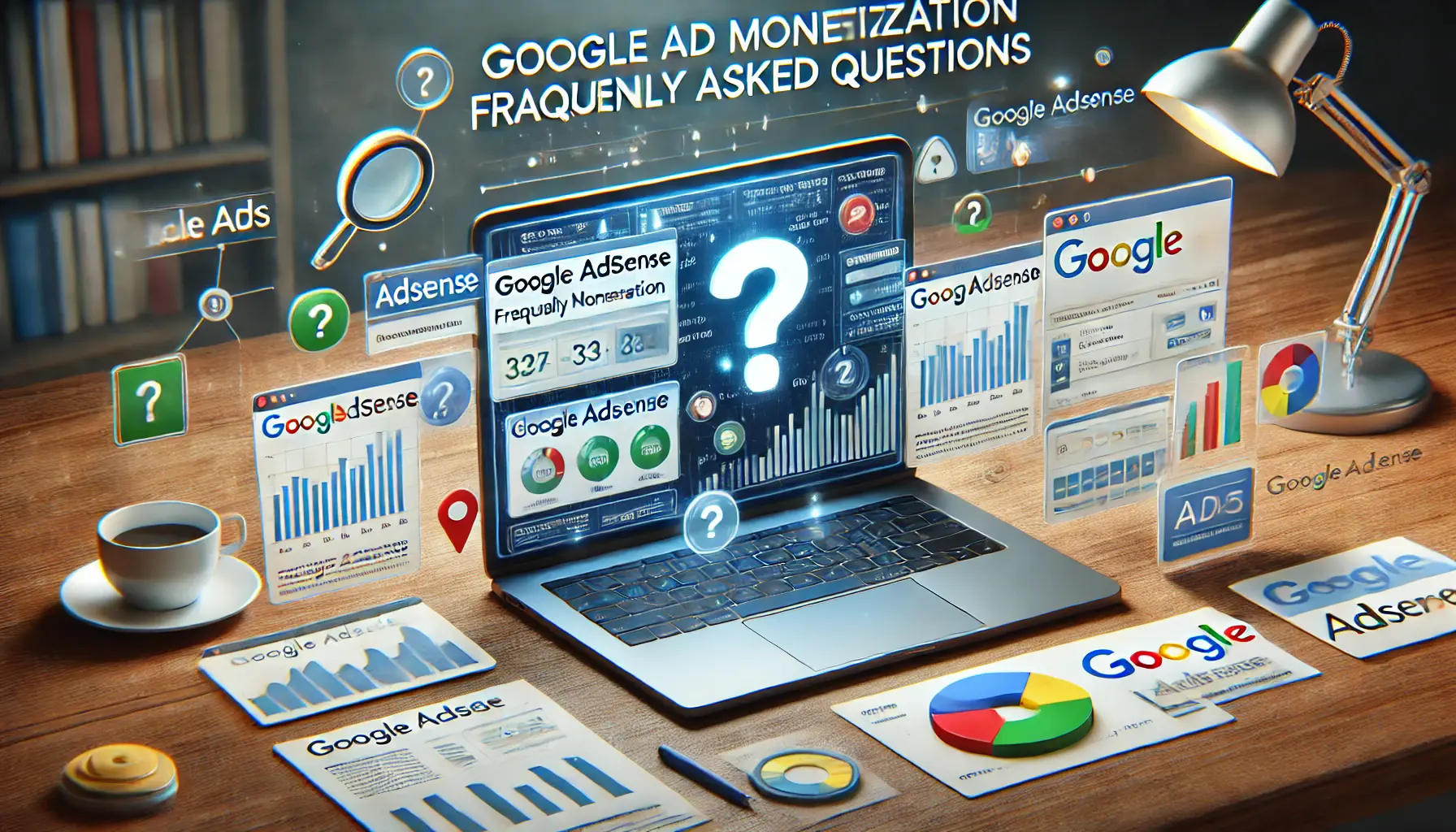
Visualizing Google ad monetization frequently asked questions and strategies for optimization.
Your campaigns can be managed by an agency specialized in Google Ads, check out our service page.
Google Ad Monetization Frequently Asked Questions
As a publisher, you may have several questions about how to effectively monetize your content using Google Ads.
Below are some common inquiries and their concise answers to guide you through the process.
Google AdSense allows publishers to earn revenue by displaying targeted ads on their websites.
It matches ads to your site’s content and visitors, generating income when users view or click the ads.
Install the ‘Site Kit by Google’ plugin on your WordPress dashboard.
After activation, connect your AdSense account through the plugin to enable automatic ad placement across your site.
Publishers must adhere to Google’s content guidelines, avoid prohibited material, implement clear privacy policies, and ensure ads do not disrupt user experience to maintain compliance.
Responsive ads adjust to various screen sizes and devices, providing a seamless browsing experience.
This adaptability increases the likelihood of user interaction and higher click-through rates.
Header bidding lets multiple demand sources bid simultaneously on ad inventory, increasing competition, which may lead to higher ad revenues for publishers.
Join acceptable adsNon-intrusive ads that comply with specific standards to provide a better user experience. programs, communicate to users the importance of ads, and use ad recovery tools to reduce revenue loss caused by ad blockers.
Google Web Stories are visually rich, tappable content optimized for mobile devices.
Integrating them can enhance audience engagement and offer new monetization opportunities.
Place ads within content flow, position them above the foldThe portion of a webpage visible without scrolling., and avoid overloading pages with ads to maintain a balance between monetization and user satisfaction.
Implementing header bidding, leveraging innovative content formats like Google Web Stories, and diversifying revenue streams beyond traditional ads can significantly boost monetization.












